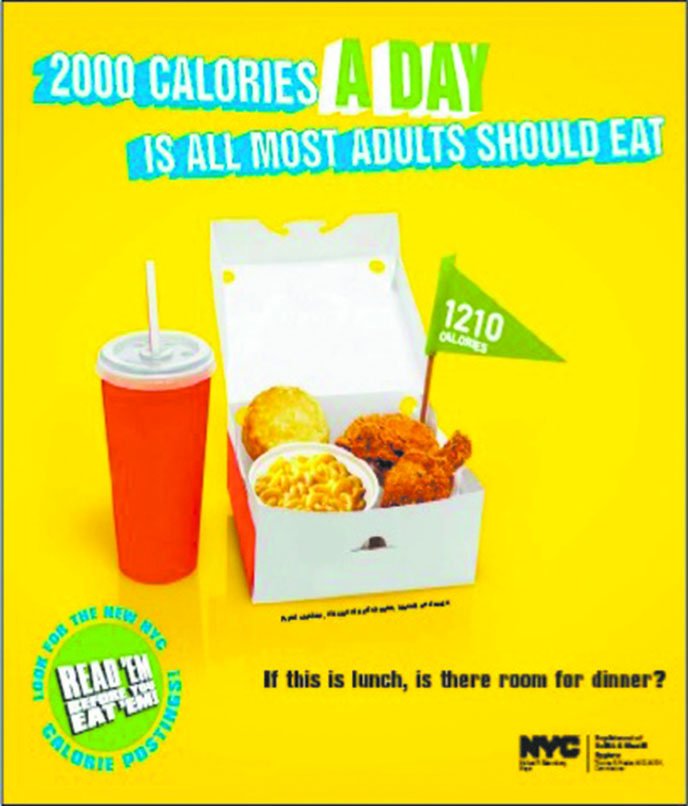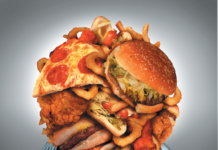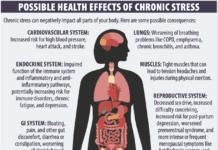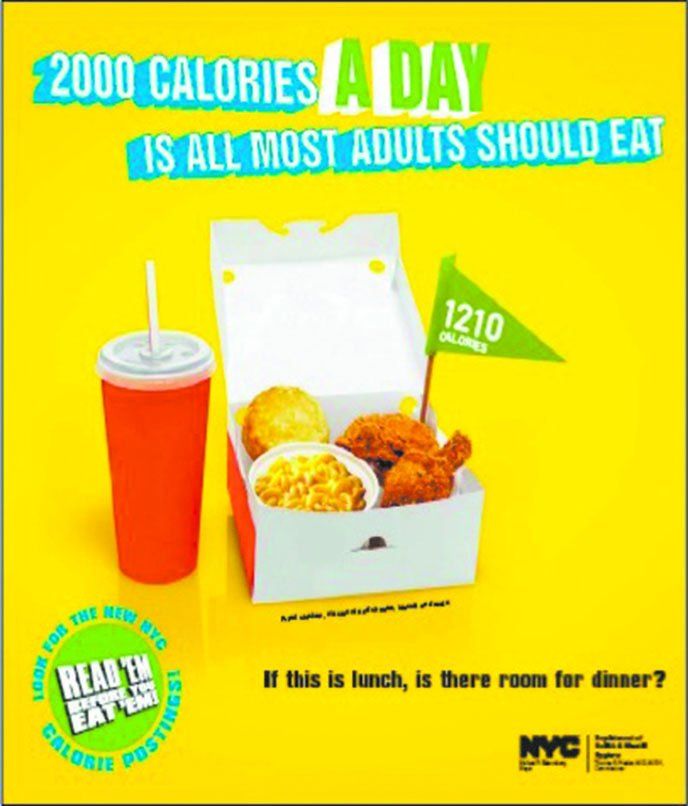
For the first time, Americans are spending more money eating out at restaurants than buying food in grocery stores. According to the US Census Bureau, consumer spending at restaurants narrowly edged grocery-store purchases in December 2014, $50.4 billion to $50.2 billion. That tiny gap has widened, with restaurant spending exceeding groceries by nearly 3% as of April. Factors driving the switch included an increasing trend to buying groceries in warehouse and “club” stores, with cheaper prices, and lower gas prices freeing up funds for eating out. The total doesn’t include ready-to-eat dishes purchased at upscale supermarkets, which further diminish what we’re cooking from scratch.
A National Restaurant Association survey reported that 49% of respondents said lower gas prices encouraged them to spend more at restaurants, fast-food franchises and coffee shops. One-third also said they are eating out more than a year ago.
The restaurant boom could have implications for the nation’s nutritional health. “We don’t have a good handle on exactly how meals prepared at home compare to those prepared outside the home,” says Alice H. Lichtenstein, DSc, director of Tufts’ HNRCA Cardiovascular Nutrition Laboratory. “However, we do know restaurant meals, for the most part, are very high in calories and sodium, and when a sugar-sweetened beverage is casually thrown in, high in sugar. Vegetables and fruits, for the most part, are absent.”
CALORIE COUNTING: Although restaurant purchases now ring up higher than those at groceries, higher prices for such foods mean Americans consume closer to one-third of their calories from restaurants and takeout meals. Studies have shown, however, that most people underestimate the calorie content of restaurant meals. In one study of more than 500 adults, only 11% could correctly identify the restaurant entre that was highest in calories. Another study found that 9 in 10 people underestimated the number of calories in restaurant dishes by 200-600 calories.
Knowing the actual calorie counts of restaurant dishes will get easier as of Dec. 1, 2016, when rules enacted as part of the Affordable Care Act kick in. (The US Food and Drug Administration recently delayed implementation, originally scheduled for this year.) The rules will mandate calorie counts at all chain restaurants with 20 or more outlets, as well as cinema concessions, vending machines, amusement parks, and prepared foods sold in supermarkets. Alcoholic beverages on restaurant menus, but not mixed drinks at a bar, must also disclose calories.
“The current data on whether people will use the information are mixed,” Lichtenstein notes. “This suggests it is important to couple providing calorie content at the point of purchase with a strong and dynamic education campaign to help people put the numbers into context.”
In 2008, for example, New York City launched a “Read ’em before you eat ’em” campaign in conjunction with the city’s own calorie-posting rules. The subway ads aimed to make consumers aware that a typical adult needs only 2,000 calories a day to maintain a steady weight—and how easy it is to overshoot that goal while eating on the go. One poster showed an apple raisin muffin that looks harmless but totals 470 calories—nearly a quarter of an adult’s daily allowance.
Cathy Nonas, director of the city health department’s Physical Activity and Nutrition program, says, “Many people end up overweight just by going with the flow. Now that this information is available in chain restaurants, it’s easy to make healthier choices. Once you set a daily calorie budget, there are lots of ways to live within it.” The department’s surveys have shown that when restaurant patrons use calorie information in deciding what to order, they average nearly 100 fewer calories in each meal purchased.
As the campaign dramatized, however, you don’t have to give up all indulgences to eat fewer calories. By ordering a diet soda instead of a regular drink and a small rather than large order of fries with your cheeseburger, for example, you can cut the caloric impact by half—from 1,250 to 670.
SKIPPING THE CHAINS: The federal version of calorie labeling won’t affect smaller chains or the 7 out of 10 eateries that are independently owned, single-unit restaurants. A 2013 Tufts study, published in JAMA Internal Medicine, suggests opting for such smaller, local eateries is not a recipe for healthier eating out. Researchers found that average meals from independent and small-chain restaurants contained two to three times the estimated calorie needs of an individual adult at a single meal and 66% of typical daily calorie requirements.
Nearly three-quarters (73%) of the meals analyzed contained more than half the daily recommended 2,000 calories for an average adult. Categories delivering the most average calories were Italian (1,755 calories), American (1,494) and Chinese (1,474). The lowest averages were from Vietnamese (922 calories) and Japanese (1,027) meals.
The average calorie counts from the independent or small-chain restaurant meals were similar to those of equivalent meals in the largest national chain restaurants. On average, the meals tested contained 1,437 calories, compared to an average of 1,359 calories as self-reported by larger national chain restaurants.
Image © ThinkstockImage: Thinkstock

FAST-FOOD CHECK: Better news, of sorts, comes from a more recent Tufts study that showed—contrary to popular perception—that fast-food choices at least have not gotten worse. Lichtenstein and colleagues published two studies in the journal Preventing Chronic Disease that reported levels of heart-unhealthy trans fats in fries have actually improved, while portion sizes, calories, sodium and saturated fat changed little between 1996 and 2013 and remain very high.
“However, the variability among chains is considerable and the levels are high for most of the individual menu items assessed,” Lichtenstein cautions, “particularly for items frequently sold together as a meal, pushing the limits of what should be eaten to maintain a healthy weight and sodium intake.” She notes that 40% of US restaurant consumption comes from fast-food chains like those studied.
Among those chains, calories in a large cheeseburger meal, with fries and a regular cola, ranged from 1,144 to 1,757. That adds up to 57% to 88% of the approximately 2,000 calories most people should eat per day. Sodium levels were also high, with the cheeseburger meal totaling 63% to 91% of the maximum 2,300 milligrams of daily sodium recommended by the Dietary Guidelines for Americans.
The study also revealed that nutrient content varied among similar items from different chains. For example, an order of small fries could differ by as much as 110 calories from chain to chain. So smart ordering isn’t as simple as always choosing the smaller portion, Lichtenstein says. “That’s because the small size of an item in one fast-food outlet likely differs significantly from the small size of the same item in another fast-food outlet.”
She recommends a one-time comparison shopping for your favorite items at the chains you frequent. “See how many calories are in that item at each restaurant. What we found is that there is a wide range, so settle on the venue that provides fewer calories. Newer lower -calorie items are appearing in fast food restaurants, too; consider them as an alternative to habitually ordered items.”

DINING PITFALLS: The challenges of restaurant menu choices didn’t matter so much when eating out was only for special occasions, says Hope S. Warshaw, MMSc, RD, author of the new book Eat Out, Eat Well, published by the American Diabetes Association. “As a Baby Boomer growing up, like most people we ate out for anniversaries, birthdays, Mother’s Day and other occasions. Today, however, restaurant meals are a big part of the way people get the job of eating done.”
Why is eating out such a nutrition obstacle course? In her book, Warshaw identifies some of the health and nutrition pitfalls of restaurant eating, including:
– Not having direct access to the chef. “In many restaurants (think fast-food burgers, sandwich shops and large sit-down chains), foods come in the back door near-ready for their final preparation or assembly steps.” That makes it harder, she says, to request simple changes to make your meal healthier.
– Fruits, vegetables, whole grains, legumes and low-fat dairy options are few and far between. “The very foods you should eat more of for good health are often limited or simply missing from restaurant menus,” Warshaw says.
Not that some restaurants aren’t trying—but consumers need to do our part by ordering these healthy options. Says Lichtenstein, “Given the efforts to introduce healthier options in all eating venues, consider taking advantage of them. If we want to see more vegetables and fruits in restaurants we need to order them; otherwise the message is thanks but no thanks.”
– Protein foods take center stage. Healthy eating guidelines suggest limiting portions of meats, poultry and seafood to about three ounces, and the USDA’s MyPlate <www.choosemyplate.gov> shows protein foods taking up only a quarter of an ideal plate. But in restaurant meals, the protein is the star—in part because diners demand it.
– Portions are frequently huge. Warshaw says, “When you are served large portions, it’s difficult to stop eating when there’s still food on your plate.” Asking that part of your meal be boxed up right at the beginning can help avoid the temptation to eat it all.
– Sodium levels tend to be high. Many restaurant meals, Warshaw notes, can total or exceed the maximum daily recommended 2,300 milligrams of sodium in a single sitting. A recent New York City initiative calls for a warning salt-shaker icon on menus for items containing a whole day’s worth of sodium. (See the August NewsBites.)
SAVVY STRATEGIES: Short of simply staying home and cooking all your meals from scratch, what can you do to overcome these pitfalls of restaurant dining? Whether your preference is fast food or takeout, “fast casual” or fine dining, Warshaw also serves up skills and strategies for healthier restaurant eating. These ideas include:
– Develop a healthy mindset and a can-do attitude. If you approach every restaurant meal as a special occasion, an excuse to throw caution to the wind, or a rewarding splurge, you’ll lose every time you pick up a menu.
– Zero in on the right site. “Choose restaurants, when you can, that make it easier for you to eat healthfully.… Steer clear of a few of your favorite restaurants in which you typically eat unhealthy meals or restaurants where the healthy pickings are slim.”
– Set your game plan prior to your arrival. If you’re familiar with an eatery’s offerings, think through what you might order before you ever get in the door. Speak up right away, too, about splitting or sharing orders with your table mates.
– Practice portion control from the start. “To cut portions down to a healthy size, you’ll need to ‘outsmart’ the menu,” Warshaw says. That starts with placing your order. She advises:
– Steer clear of menu descriptions like “jumbo,” “grande,” “supreme,” “feast,” “combo,” etc.
– Go instead for those that mean small servings, like “regular,” “petite” and even “kiddie.”
– If available, ask for half-, lunch- or appetizer-sized portions.
– Choose from la carte items and/or side offerings, mixing and matching to make a meal.
– Split and share or wrap up part of your food to take home.
– Practice menu creativity. There’s no rule, for example, that says you have to order an entre. Start with a soup or side salad, then eat an appetizer. Or eat “family style,” the way meals are often served at Asian restaurants, ordering one or two fewer items than the number of diners.
– Order foods as you need and want them. “Special requests are key to being served dishes as you like (and want or need) them,” Warshaw says. That might mean asking for an ingredient to be left off or served on the side, or for a substitution, or a different cooking method such as broiling instead of frying. “Be reasonable and realistic,” she advises—but also “pleasantly assertive.” Practice phrases such as “Do you think the chef will…?” or “Would it be a problem to…?”
– Know when to say “enough.” Warshaw says, “Be clear about your definition of fullness.” You don’t have to be a member of the “clean plate club”—recognize instead the internal clues when your body is saying you’ve had plenty.
Armed with these skills and strategies, she says, you can navigate any restaurant menu while sticking to your healthy-eating goals. “There’s no one healthiest cuisine,” Warshaw says. “You can go into 99% of restaurants and choose to eat healthier.”
The three most popular ethnic cuisines in US restaurantsMexican, Italian and Chinesepresent particular challenges for healthy eating. In her new book, Eat Out, Eat Well, Hope S. Warshaw provides detailed nutrition snapshots and ordering tips for these and four other favorite cuisines (plus pizza, which gets its own chapter). Here are a few of her tips for nutrition-smart eating at Mexican restaurants:
– Dont overdo the chips. Before you know it, you can easily eat more than 500 calories. Ask your server not to bring them, or put just a few on your plate and then shove the basket out of arms reach.
– Choose grilled items when you can. Add flavor to these dishes with salsas and grilled vegetables.
– Take advantage of ordering à la carte.
– Drink wisely. A typical margarita is loaded with sugar and calories.
– Choose soft tacos instead of hard, corn (a whole grain) instead of flour tortillas.
– Ask the kitchen to hold or reduce the cheese.
– Skip the tortilla shells and fried strips with salads.
Feel like Italian tonight? Here are some of expert Hope S. Warshaws tips for eating with a little less gusto:
– Make marinara sauce (or light tomato sauce) your go-to sauce.
– Along with pasta, munch on a healthy garden salad to fill yourself up.
– Those red-pepper flakes in the shaker on your table will add zip without adding calories.
– Decline the bread basket before it even hits your table.
– Ask if a vegetable can be added to a pasta dish.
– Ask the chef to hold or go easy on the cheese, bacon and olives.
Whether youre ordering Chinese takeout or dining in, try these tips from Eat Out, Eat Well:
– Try hot Chinese mustard or chile sauce for dipping instead of sweet or soy sauce-based condiments.
– Choose steamed brown rice instead of fried rice.
– Eat family style, ordering fewer dishes than there are diners.
– Use chopsticks to slow down your eating, particularly if you havent mastered them yet.
– Ask to have extra vegetables added to a dish, even if it means paying a bit more.
– Order dishes in which the protein is sautéed rather than breaded and deep-fried.
























